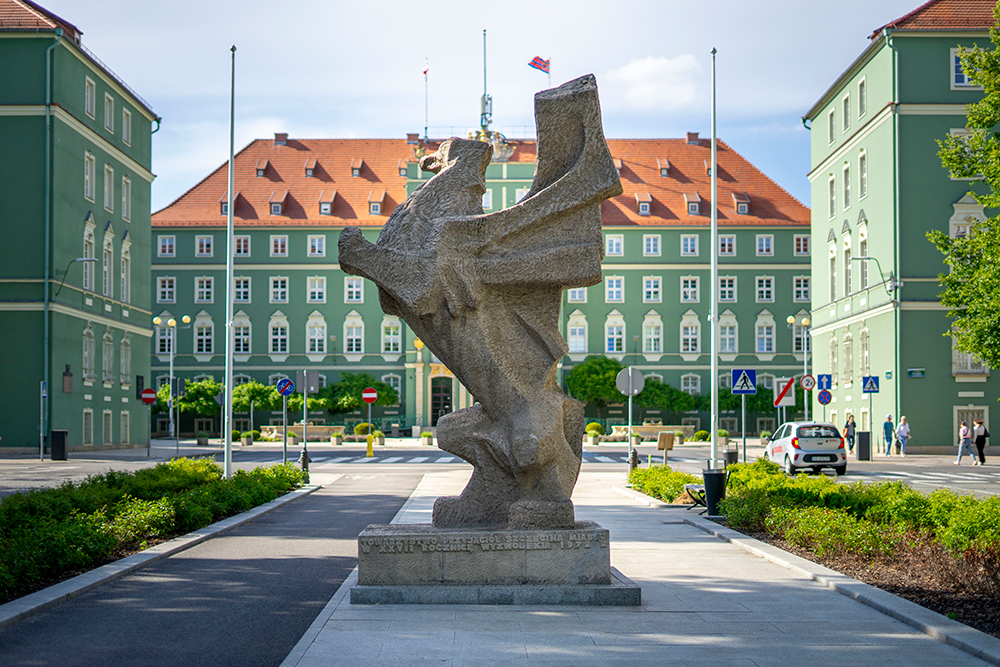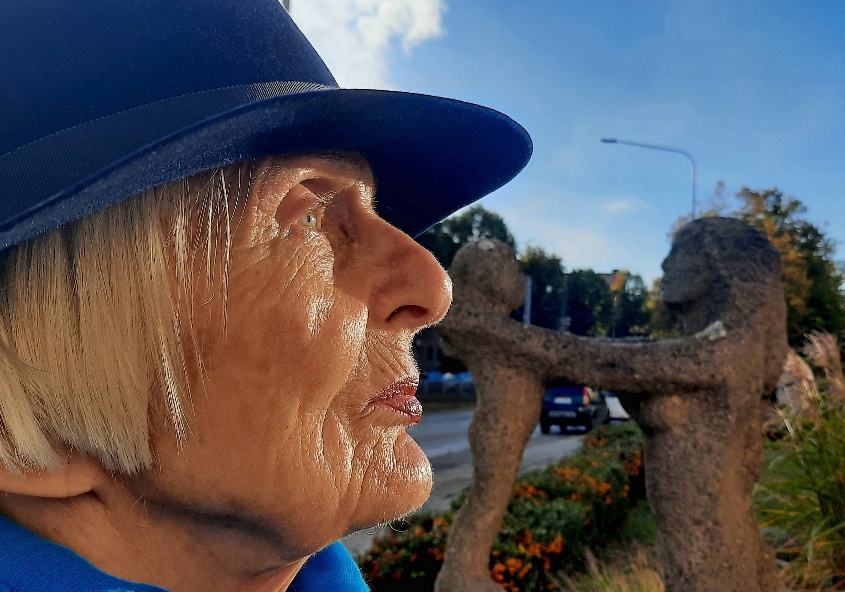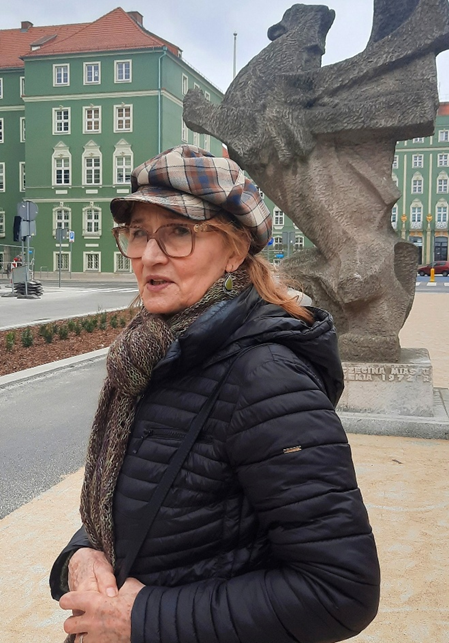Sculpture: "GRYF" [Gryffin]

Authors: LEONIA CHMIELNIK, ANNA PASZKIEWICZ
It was created in 1972 and stood in front of the Town Hall in the square opening up the Golden Route, then called Avenue of National Unity. The sculpture is dynamic in nature with a vertical composition in which the creature is shown standing. It is supported on its hind legs, which are slightly bent, while its front legs are raised in front of it, at breast height. The authors of the statue are Leonia Chmielnik and Anna Paszkiewicz, outstanding Szczecin sculptors, known for their many successful works in Szczecin's urban space. The sculpture was created on the initiative of the Society of Friends of Szczecin, on the occasion of the 27th anniversary of the liberation (!) of Szczecin, as indicated by the relevant inscription on the plinth. It was only discovered during the restoration of the avenue in 2022, sparking fierce debate, but as a testament to Szczecin's difficult history, the controversial inscription was left unchanged. After all, the griffins have seen more than their fair share of Szczecin...


The Griffin in Szczecin is... commonplace. It is the decoration of tenements, bas-reliefs, metalwork, coats of arms of all kinds, mosaics, plaques and even the somewhat tacky plastic Gryfus. If one wanted to count all the depictions of griffins in urban space, it would be quite a large herd. I won't judge which of its depictions in urban space deserves special attention or recognition. Fortunately, there is only one monument to the Griffin, and it is 4 metres high, made of artificial stone (apart from it, the half lion, half eagle enchanted in stone can still be found in front of the artificial cave in Park Leśny Zdroje; it is a bas-relief by Stanisław Biżek from 1982, made on a surviving original cenotaph).
Where does the griffin come from ?
I will disappoint those who think that griffins are a Szczecin or Pomeranian species (a legend?). The oldest depictions of this creature date back to 3000 BC, and have been discovered in Mesopotamia, Egypt, as well as Crete and Cyprus, among others. The ancients regarded it as a symbol of cunning and guile, but also of strength and agility. In European heraldry, as a symbol of knighthood or rulers, they appear as early as the 12th century. It was the dukes ruling over Western Pomerania who chose the griffin as their symbol, hence the name Gryphites for this dynasty. Even today, the griffin can be found in the coats of arms of many Pomeranian towns. He is also the patron of southern Swedish Skåne, the Ukrainian (temporarily Russian?) Crimea or the Polish Podkarpacie region. As elements of coats of arms (so-called keepers), it also appears in the symbols of Prague, Genoa or Antwerp..
Text author: Daniel Źródlewski
https://tekstyzrodlowe.pl/szczecin-tuzin/szczecin-tuzin-ptaki.html
photographs of the authors: Marta Płachta
dictionary
Golden Route - This leads from the city centre - from the Castle of the Pomeranian Dukes, along John Paul II Avenue, through Kasprowicz Park, Arkona Forest to Wkrzanska Forest.
https://visitszczecin.eu/pl/inne/82-zloty-szlak
Society of Friends of Szczecin - an association supporting culture and art in Szczecin during the communist era. It was founded in 1962 and was active until 2021. Its President was, among others, Jan Stopyra, the longest-serving President of Szczecin. It was at his initiative, among others, that the Czynu Polaków Monument was erected on Jasne Błonia in 1978..
